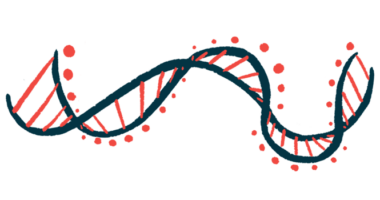AADC deficiency carriers found to be more than estimated in Sicily
Study uncovers higher prevalence of carriers in northern, eastern Sicily, in Italy

About one in 39 individuals with neurological deficits on the Italian island of Sicily are carriers of genetic mutations associated with aromatic l-amino acid decarboxylase (AADC) deficiency, a higher prevalence than previously estimated, according to a recent study.
Carriers are individuals with one mutated copy of the gene and usually do not exhibit disease symptoms, although they can pass the disease-causing gene on to their biological children.
Researchers estimate a disease prevalence of one per 6,000 live births in this region, which is comparable to other conditions included in newborn screening programs.
“Our results focus on the importance of including [AADC deficiency] in neonatal screening for early diagnosis, in order to act with targeted treatments that could reduce the progression of [the disease] signs and symptoms,” researchers wrote.
The study, “Aromatic L-Amino Acid Decarboxylase Deficiency: A Genetic Screening in Sicilian Patients with Neurological Disorders,” was published in the journal Genes.
DDC gene mutations affect neurological, motor development
In AADC deficiency, mutations in the DDC gene lead to low levels of the AADC enzyme or an enzyme that does not work properly. The enzyme is critical for the production of neurotransmitters, or signaling molecules nerve cells use to communicate, particularly the neurotransmitters dopamine and serotonin.
Deficiency in these neurotransmitters leads to symptoms such as developmental delay, intellectual disability, movement disorders, dysregulation of involuntary body functions, mental health issues, and seizures.
The disease is estimated to affect about one to three per 90,000 live newborns in the U.S., and one in every 118,000 in the European Union. However, “to date, there are no reliable data on the prevalence and global incidence of AADC deficiency,” the researchers wrote.
Diagnosing AADC involves examining the levels of the affected neurotransmitters and related molecules, measuring AADC activity in the blood, and genetic testing for the presence of mutations in the DDC gene. Still, the disease is likely underdiagnosed or misdiagnosed due to a lack of awareness or its similarities to other conditions.
Now, researchers in Italy conducted genetic testing for DDC mutations in 350 unrelated patients in Sicily, who had different neurological disorders from unidentified causes, with one or more signs of AADC deficiency. These signs included neuromuscular disorders, cognitive deficits, behavioral disorders, and autism spectrum disorder.
The patients, 214 male and 136 female, were from 1 to 53 years old. One-third of the patients had only one of the included signs, while 45% had two signs, and 22% had three signs.
Prompt initiation of treatment before symptom onset would enhance the expected benefits of gene therapy and possibly prevent some signs and symptoms associated with the disease.
12 patients (3.4%) in study were carriers of DDC mutations
Overall, 12 patients (3.4%) were carriers of DDC mutations in one gene copy, called heterozygous mutations. Nine carriers had known disease-causing variants, mainly the R462Q variant in six patients. Of these, three had neuromuscular and cognitive symptoms and autism; one had neuromuscular, behavioral, and cognitive symptoms; one had behavioral and cognitive issues, and one had neuromuscular problems.
The second most common variant was P210L, present in two patients with neuromuscular signs and cognitive deficit, whereas the F77L variant was present in one patient with neuromuscular issues.
Moreover, three patients had new DDC variants that had never been reported in the literature or in individuals affected by DDC-related conditions.
“Our study shows a high frequency of carriers [of AADC known related mutations] (2.57%, or one in 39) in Sicilian subjects with neurological deficits, with a higher concentration in northern and eastern Sicily,” the researchers wrote.
“This high percentage may suggest that also heterozygous individuals for DDC gene variants may present clinical signs of [AADC deficiency], in particular neuromuscular disorders and cognitive impairment,” they added. However, when comparing the clinical outcomes between patients with and without DDC variants, there were no significant differences.
Study stresses importance of including AADC deficiency in newborn screening
Also, considering the group of patients is representative of the Sicilian general population, the carrier frequency would mean a calculated AADC deficiency prevalence of one in every 6,000 individuals.
This study suggests a higher prevalence of the disease, compared with other serious conditions included in neonatal screening programs, such as spinal muscular atrophy or cystic fibrosis, indicating the importance of including AADC deficiency in these screening programs for early diagnosis.
Starting treatment before symptom onset can reduce the progression of disease symptoms and improve the quality of both patients and their families.
“Prompt initiation of treatment before symptom onset would enhance the expected benefits of gene therapy and possibly prevent some signs and symptoms associated with the disease,” the researchers wrote.








